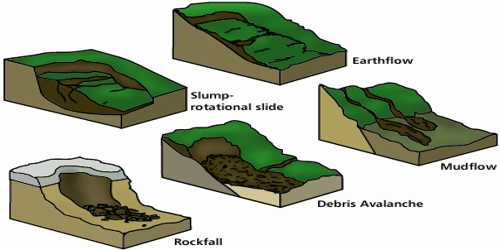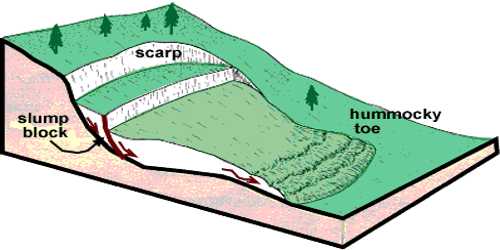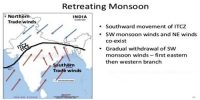Mass movement is the movement of surface material caused by gravity. Landslides and rockfalls are examples of very sudden movements of this type. These movements transfer the mass of rock debris down the slopes under the direct influence of gravity. That means, air, water or ice do not carry debris with them from place to place but on the other hand, the debris may carry with it air, water or ice. The movements of mass may range from slow to rapid, affecting shallow to deep columns of materials and include creep, flow, slide, and fall. Gravity exerts its force on all matter, both bedrock and the products of weathering. So, weathering is not a pre-requisite for mass movement though it aids mass movements. Mass movements are very active over weathered slopes rather than over unweathered materials.

Mass movements are aided by gravity and no geomorphic agent like running water, glaciers, wind, waves and currents participate in the process of mass movements. That means mass movements do not come under erosion though there is a shift (aided by gravity) of materials from one place to another. Materials over the slopes have their own resistance to disturbing forces and will yield only when force is greater than the shearing resistance of the materials. Weak unconsolidated materials, thinly bedded rocks, faults, steeply dipping beds, vertical cliffs or steep slopes, abundant precipitation and torrential rains and scarcity of vegetation etc., favor mass movements.
Several activating causes precede mass movements. They are:
(i) removal of support from below to materials above through natural or artificial means;
(ii) increase in gradient and height of slopes;
(iii) overloading through the addition of materials naturally or by artificial filling;
(iv) overloading due to heavy rainfall, saturation, and lubrication of slope materials;
(v) removal of material or load from over the original slope surfaces;
(vi) the occurrence of earthquakes, explosions or machinery;
(vii) excessive natural seepage;
(viii) the heavy drawdown of water from lakes, reservoirs, and rivers leading to slow outflow of water from under the slopes or river banks;
(ix) indiscriminate removal of natural vegetation.
Mass movements can be grouped into three major classes: (i) slow movements; (ii) rapid movements; (iii) landslides.
















